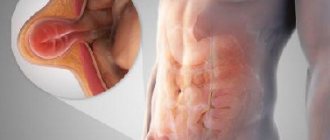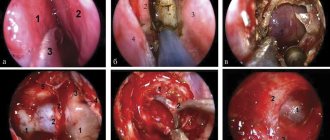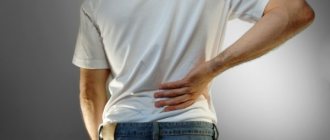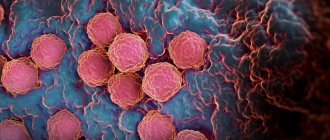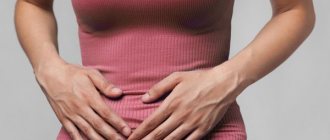What causes a mini stroke?
There are many negative factors that significantly increase the risk of developing the disease in question. Here are the main ones:
- Too hard physical labor and working with weights that place an undue burden on the body;
- Dependence on harmful substances: nicotine, drugs or alcohol;
- Excessive excess body weight;
- Constant lack of sleep, the influence of stress, depression, constant worries and worries;
- Eating junk food, violating the basics of proper nutrition;
- Working in hazardous conditions;
- Poisoning of the body with substances that can provoke vascular spasms.
Also, the likelihood of a mini-stroke increases significantly with diseases such as:
- Increased level of blood viscosity;
- Problems with blood vessels: their inflammation, any congenital anomalies;
- Heart diseases;
- Thrombosis
- Diabetes.
The factor of heredity may play an important role. Even in the absence of the diseases mentioned, the risk of experiencing a mini-stroke increases significantly for every man aged 45 years or older.
Brief description of the disease
Acute damage to the cerebral circulation can take place in the form of a transient ischemic attack, microstroke or stroke. The latter can be recognized when neurological symptoms last for more than a day. In the case of a transient change in blood circulation in the brain, as in the presence of a microstroke, the signs of the disease disappear within 24 hours. In addition, no morphological abnormalities of the brain are noted. With a microstroke, foci of necrosis of the brain substance appear.
Signs of the disease in men and women are not at all different. They do not manifest themselves clearly, as with hemorrhagic and ischemic stroke. Often people suffer pathology on their legs and are not aware of it, which is dangerous for a person, since the risk of developing a full-fledged stroke in the near future increases.
Previously, microstroke was observed in old age, in women at 75-80 years old, in men - 65-70 years old, and currently the disease is observed in the younger population - 50-55 years old. Fortunately, the disease occurs extremely rarely in children; it can appear in a premature baby.
Symptoms and main signs
All possible symptoms of a microstroke are usually divided into two large categories: focal and cerebral. In the first case, the normal blood circulation of only certain parts of the brain is disrupted, so by what functions are affected, one can understand which area of the brain has undergone an attack. The following symptoms are possible:
- Numbness and paralysis of various limbs;
- Sudden vision problems, most often localized in the direction where the attack occurred;
- Problems with movement, loss of normal muscle tone;
- Impaired memory and thought processes;
- Speech problems;
- Problems with swallowing, etc.
As for cerebral symptoms, they look like this:
- Sudden onset of headaches, dizziness;
- Problems with coordination;
- Weakness in arms, legs;
- Fainting and clouding of consciousness;
- It becomes difficult to breathe, the patient complains of a “lump” in the throat;
- Attacks of nausea and vomiting;
- Painful sensitivity to light, noise.
If such phenomena occur, it is imperative to call an ambulance.
Kinds
The consequences of a stroke are several types of amnesia. Based on what type of injury the attending physician diagnoses, individual treatment and rehabilitation measures are prescribed.
Types of amnesia:
- Damage to verbal memory;
- Visual glitches;
- Motor skills disorders;
- Damage to emotional-figurative memory.
- Vascular dementia.
Verbal
Verbal memory is the ability to remember, retain and reproduce verbal information.
If the part of the brain responsible for storing information received verbally is damaged, then the patient cannot remember the names of relatives and friends, forgets the names of objects, and loses vocabulary. Communication with others becomes extremely difficult, and the victim has difficulty remembering new information.
Visual memory impairment
A person’s ability to fix, store and use various information that is received in the form of a visual image is called visual memory.
After a stroke, a patient whose area that stores visual information is damaged may not recognize everything around him: his home, family, friends, objects, etc.
Loss of motor skills
Motor skills are a person’s ability to confidently perform complex movements. Patients forget the simplest actions: how to use cutlery, walk, squat, write, grasp objects with their hands, go up and down stairs, etc.
Loss of emotional-figurative memory
Emotional-visual memory is responsible for the ability to record and store feelings and emotions that are associated with any object, person, event or phenomenon. If it is violated, the patient ceases to recognize the images and emotions that are associated with them. He does not remember the taste of dishes that he previously considered favorite, changes his musical tastes, and does not recognize the voices of loved ones and acquaintances.
Vascular dementia
The most complex type of brain disorder, which is difficult to recover, is vascular dementia. The adequacy of a person’s perception of what surrounds him disappears almost completely over time.
A person does not recognize objects that he used to constantly use, does not remember their names and purposes. When communicating with other people, the patient cannot remember their names and where he knows them from. This applies not only to distant acquaintances or strangers, but also to close relatives, friends and colleagues.
However, if you choose the right intensive rehabilitation measures and constantly monitor the patient’s condition, you can slow down the process of dementia and adapt the person to real life.
Micro-stroke “on your feet”
Since the symptoms of a mini-stroke can last for a fairly limited time, some resilient men can suffer them without even stopping their daily activities. It seems to them that nothing terrible is happening - just a slight malaise, which goes away after an hour. Accordingly, neither a visit to a doctor nor adequate treatment occurs here.
This is very dangerous, because an ignored attack often becomes the reason for its rapid recurrence or, in general, the main factor in the development of cerebral ischemia. If this happens, the consequences will be very serious, including disability, and treatment will take several months or even years.
Psychological support
The patient’s relatives need to provide a positive environment at home, demonstrate their willingness to help, support the patient, and assure that his condition is temporary and changes for the better are inevitable. If the patient’s condition allows, he should be involved in feasible household chores, making him feel important and not removed from everyday worries.
A psychologist or psychotherapist will help you cope with panic attacks and depression. If the patient experiences acute conditions, aggression, or suicidal thoughts, the help of a psychiatrist and the prescription of medications may be required.
The duration of the recovery period depends on many factors: the extent of the damage, the age of the patient, and the presence of concomitant diseases. In patients who have suffered a mild form of stroke, partial recovery requires 1-2 months, and complete recovery takes about 3 months. In severe forms with persistent impairments, partial restoration of lost functions occurs after at least six months, and the chance of returning all lost skills is minimal.
According to statistics, after the first year after a stroke, 60% of patients do not need outside help. 30% can return to their previous work. Help with complex tasks is required during this period by 20% of patients. 15% of those who have suffered a stroke remain dependent on outside help, 5% need constant care.
First aid for microstroke
If a person has a mini-stroke, then you need to immediately call an ambulance, and while it is on the way, take the following measures:
- Place the patient on a flat plane, raise the head slightly above the body and turn to the side;
- Loosen the straps, unfasten the buttons;
- Open the windows in the room;
- If possible, eliminate noise and other irritants;
- You cannot let a person panic, so it is necessary to have calming conversations with him;
- If necessary, cardiac massage and artificial respiration are performed.
You cannot give a person with an attack medications that affect the condition of blood vessels, blood pressure, slow him down, or allow him to get up.
General rules of care
The recovery period after a stroke is divided into early (up to 6 months), late (6-12 months) and residual effects (after 1 year). Ideally, in the early recovery period, the patient is recommended to be treated in palliative hospitals, sanatoriums, in the late recovery period and during the period of residual effects - in a day hospital, rehabilitation department, or by a visiting team at home. In reality, most often patients are at home after an acute period of stroke, and the main question that arises among their loved ones is where to begin rehabilitation. One of the main tasks of the rehabilitation process is to create comfortable conditions that promote relief and speedy recovery.
Preparing the premises
To exclude the impact of external traumatic factors (light, sound, temperature stimuli) on the patient’s psyche, he should be placed in a bright, well-ventilated room, where no extraneous noise can be heard from the street. The room should maintain a comfortable temperature within +18-22 °C.
The room should not be cluttered with furniture or objects that are easily moved out of place. A good alternative to a regular bed would be a functional one - with adjustable height and backrest position, side rails, and lockable wheels. Near the bed you need to place a bedside table with hygiene items, a blood pressure monitor, other necessary things, a wheelchair or other mobility aids (walkers, canes), a portable toilet or a bedpan.
If the person caring for the patient is not always with him, you can equip the room with a call button that the patient can easily reach, or replace it with a regular bell. Patients who can move independently or are beginning to train the skill of walking will find handrails along the walls very useful, and anti-slip mats in the bathroom will prevent injuries.
Body hygiene and bedsore prevention
Adequate prevention of bedsores can prevent their occurrence in 80% of cases.
Preventive measures:
- a special anti-bedsore or foam mattress with a thickness of at least 10 cm;
- soft bed linen without wrinkles;
- special cushions or pads made of foam rubber for vulnerable parts of the body (back of the head, shoulder blades, elbows, sacrum, heels, ankles);
- changing body position every 2-3 hours;
- comfortable underwear;
- prevention of skin trauma - carefully moving or turning over the patient.
It is important to carry out proper hygiene measures and skin care. At least once a day, during hygienic procedures, you should examine the entire surface of the patient’s body, vulnerable areas - every time you turn over. You should use waterproof diapers and diapers and change them as needed. It is necessary to wash the patient with warm water without soap after each bowel movement, washing with soap - no more than once a day, it is better to use liquid soap. After washing, the skin is thoroughly dried with a soft towel. For dry skin, moisturizing and nourishing creams are used; for diaper rash, powders without talc are used.
Nutrition
Food should be comfortable to swallow and easily digestible. The patient needs a sufficient amount of fluid - at least 1.5 liters. in the absence of restrictions. Drinking should not be limited even with urinary incontinence, since with a lack of fluid, urine becomes concentrated and irritates the skin.
The patient's diet should contain a sufficient amount of protein. It can be a soufflé, minced chicken, beef, rabbit, or fish. Patients who have difficulty chewing or swallowing semi-solid foods may be given meat or fish broth.
The menu should include dishes rich in vitamin C, iron, zinc, fermented milk products, fruits and vegetables.
Food is prepared boiled or baked and must be freshly prepared. You should not eat fried foods, pickles, smoked foods, spicy foods, canned food, fast food, carbonated and sweet drinks. You need to eat 4-5 times a day, in small portions.
Treatment of male microstroke
The very first measure in treatment is to restore normal blood flow to the brain. This is done with the help of special medications:
- Means for normalizing blood pressure;
- Cardiac glycosides that help normal heart function;
- Vasoactive drugs that help improve blood circulation in brain tissue;
- Drugs that help reduce blood clotting;
- Nootropics that allow you to stimulate brain function, thought processes, and nutrition of brain cells.
- In addition to medications, the patient undergoes additional rehabilitation measures:
- Massages;
- Special exercises for breathing;
- Physiotherapy;
- If necessary, meet with a psychologist or speech therapist.
Diagnosis of the disease
The diagnosis is made using MRI. Only through this high-tech method will it be possible to identify microdamage to the arteries of the brain. The main thing is to implement it as early as possible after the onset of the pathological process.
Other methods for detecting microstroke are:
- PET (positron emission tomography) - the procedure determines the cerebral blood supply to each area of the brain, reveals the level of vascular ischemia, as well as signs of resumption of blood supply; the only drawback of the study is the high cost;
- CT - imaging is performed by x-rays.
In addition to a tomographic examination, the brain vessels are carefully examined for the presence of atherosclerotic plaques and blood clots. If they are present, surgery can be performed, which is the best preventative measure for stroke. The list of necessary studies includes diagnostics of the veins of the lower extremities, the heart, and a blood test.
Possible consequences
A microstroke is a serious phenomenon that most often leaves behind temporary or permanent consequences of this kind:
- Headaches and slight dizziness;
- Increased fatigue;
- Absent-mindedness and inability to focus attention;
- Drowsiness and general weakness;
- Sudden mood swings.
If the problem is not treated in a timely manner, very dangerous consequences may occur in the form of:
- Paralysis;
- Problems with coordination, memory, speech, vision;
- Development of mental disorders;
- Problems with normal urination and swallowing.
To prevent such problems, it is necessary to provide timely assistance to the patient and call an ambulance.
Motor rehabilitation
The return of motor skills should begin as early as possible. Various exercises are used for rehabilitation after a stroke at home. Some of them can be done while the patient is in a supine position. These include:
- raising and lowering, bending and straightening the joints of the legs and arms;
- rotation of the arms at the wrist and elbow joints;
- clenching and unclenching fists;
- foot movements.
If the patient cannot yet sit or roll over independently, it is necessary to periodically change the position of his body. An assistant helps the patient turn over by approaching him from the affected side and holding him by the healthy shoulder, knee or hip.
When the patient begins to sit down, a special device on the functional bed will help him with this, by which he will pull himself up. You can do the following exercises while sitting:
- throwing the head back, tilting the head, rotating;
- stretching and bending the body forward;
- arching in the back, retraction of the shoulder blades;
- rotation of the arms in the shoulder joints;
- alternate leg lifts.
If a person can stand, the list of recommended exercises expands - the patient can additionally perform rotations and arm swings, bending, arm extensions with an expander, and walking in place.
Sitting down, changing positions in bed, getting up and walking if the patient was initially in a supine position is possible only after the doctor’s permission.
To improve coordination of movements, you should move your eyes in different directions, throw small objects at the target, gradually increasing their volume and mass and moving the target away. As the patient's condition improves, swinging movements in large joints, turns and tilts of the body are added.
Puzzles, construction sets, modeling from plasticine, origami, making appliques or regular copybooks are perfect for training fine motor skills.
Prevention
To prevent a micro-stroke, you need to follow these fairly simple recommendations from specialists:
- Give up bad habits: alcohol, smoking, and especially drugs;
- Avoid stress and overexcitement, do not quarrel whenever possible and do not succumb to depression;
- Play sports with moderate physical activity;
- Get enough sleep;
- Avoid obesity, eat properly and in moderation;
- Periodically undergo examination and preventive treatment.
It is enough to follow these simple rules, and the likelihood of a micro-stroke can be minimized.
Diet
Diet for stroke
- Efficacy: therapeutic effect after 1 month
- Timing: constantly
- Cost of food: 1700-1900 rubles per week
In cases of high blood pressure and hyperlipidemia, dietary restrictions on table salt and fats are indicated. cholesterol increases to more than 6.5 mmol/l, and the level of high-density lipoproteins decreases to less than 0.9 mmol/l, it is necessary to adhere to a more strict diet with a reduction in fat to 20% of the daily calorie intake. For atherosclerotic lesions, a very low-fat diet and a cholesterol intake of no more than 5 mg per day are used. At the same time, fiber is introduced into the diet - vegetables, fruits, dried fruits, bran. If a strict diet fails to reduce cholesterol levels within 6 months, antihyperlipidemic drugs are recommended.
Who takes more risks?
Signs of a microstroke occur mainly in people whose blood vessels have already been damaged by some pathological process. This happens when:
- atherosclerosis;
- congenital changes in the structure of blood vessels;
- diabetes mellitus, which leads to changes in the structure of the vascular wall;
- increased blood pressure due to various reasons;
- heart diseases: myocardial infarction, arrhythmias, endocarditis, heart defects. This increases the risk of thrombosis;
- after heart surgery (associated with the formation of a blood clot and its entry into the cerebral artery system);
- taking tablet contraceptives, which increase the risk of thrombosis;
- smoking or frequent drinking of alcohol, leading to vasospasm;
- migraine, in which the regulation of vascular tone is disrupted;
- inflammation of the blood vessels of the brain (vasculitis), which may be infectious or autoimmune in nature;
- compression of the arteries supplying the brain in the cranial cavity or in the neck with: osteochondrosis or spondylosis of the cervical spine, intracranial or neck tumor;
- aneurysms of the arteries of the brain, when dilated areas appear in them in which blood clots can appear;
- vegetative-vascular dystonia, one of its variants, when the coordinated command of vascular tone on the part of two parts of the autonomic nervous system is disrupted;
- varicose veins of the venous bed of the legs: dilated vessels with low blood flow speed are a favorite place where blood clots form;
- overweight: adipose tissue, especially in the abdominal area, is itself an endocrine gland. It produces estrogens, the excess of which increases the risk of blood clots;
- constant heavy physical activity, which affects vascular tone;
- chronic stress acting on the hypothalamus - an endocrine organ in the cranial cavity, commander, including the autonomic nervous system;
- diseases of the blood coagulation system, when the tendency to thrombosis increases;
- Fabry disease is a hereditary disease in which special molecules, sphingolipids, are deposited in vascular cells. This reduces the diameter of the arteries.
The more risk factors one person has, the higher the chance of developing a vascular accident.
The risk of developing a microstroke (and stroke) increases after 30 years; from 60 it doubles. This is due to a slowdown in metabolic processes, including in the vascular wall. As a result, the diameter of the arteries (including the brain ones) usually decreases. In addition, the vessels begin to respond less well to commands to expand and contract coming from the nervous system.
